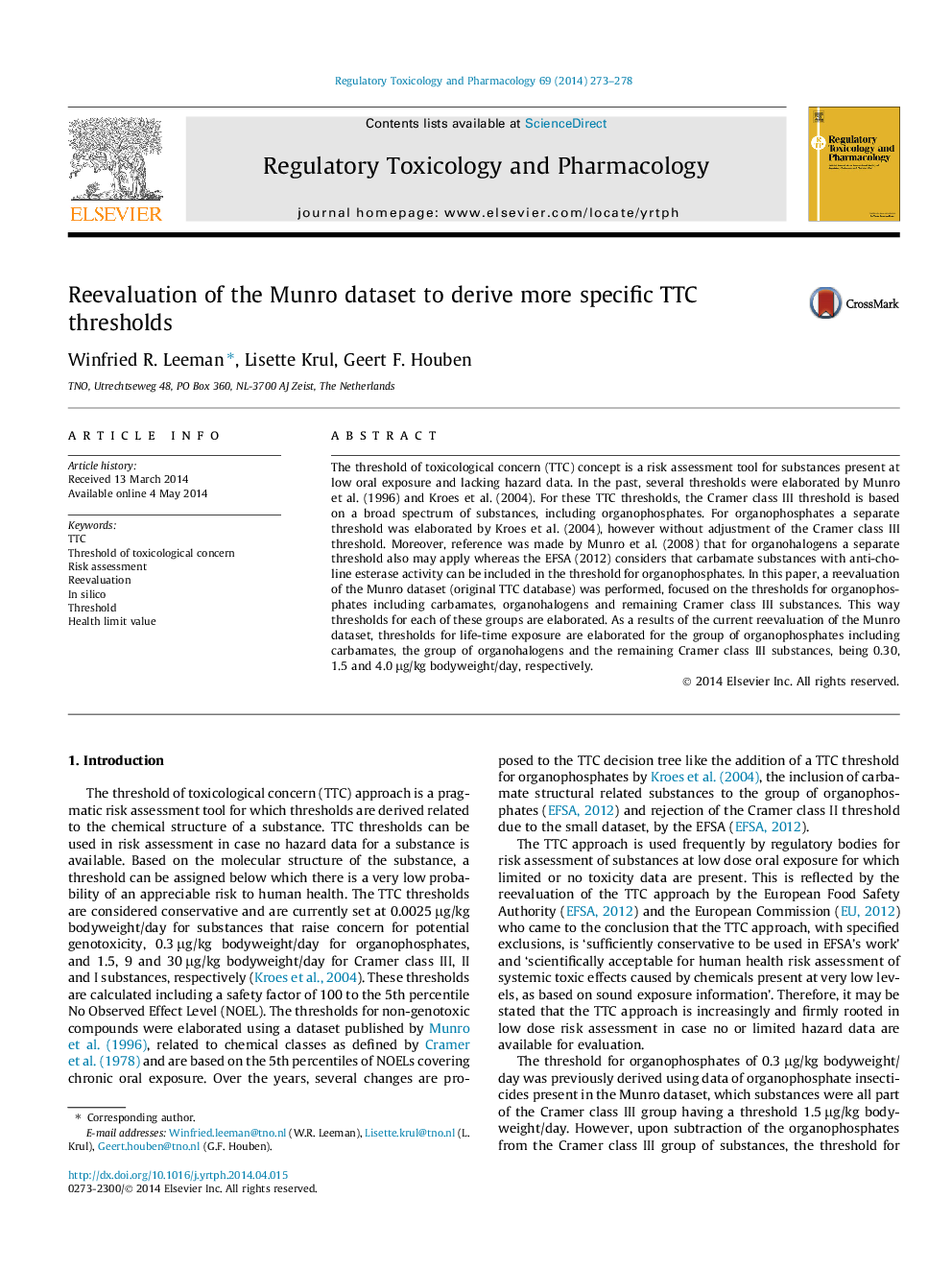| Article ID | Journal | Published Year | Pages | File Type |
|---|---|---|---|---|
| 5857222 | Regulatory Toxicology and Pharmacology | 2014 | 6 Pages |
Abstract
The threshold of toxicological concern (TTC) concept is a risk assessment tool for substances present at low oral exposure and lacking hazard data. In the past, several thresholds were elaborated by Munro et al. (1996) and Kroes et al. (2004). For these TTC thresholds, the Cramer class III threshold is based on a broad spectrum of substances, including organophosphates. For organophosphates a separate threshold was elaborated by Kroes et al. (2004), however without adjustment of the Cramer class III threshold. Moreover, reference was made by Munro et al. (2008) that for organohalogens a separate threshold also may apply whereas the EFSA (2012) considers that carbamate substances with anti-choline esterase activity can be included in the threshold for organophosphates. In this paper, a reevaluation of the Munro dataset (original TTC database) was performed, focused on the thresholds for organophosphates including carbamates, organohalogens and remaining Cramer class III substances. This way thresholds for each of these groups are elaborated. As a results of the current reevaluation of the Munro dataset, thresholds for life-time exposure are elaborated for the group of organophosphates including carbamates, the group of organohalogens and the remaining Cramer class III substances, being 0.30, 1.5 and 4.0 μg/kg bodyweight/day, respectively.
Related Topics
Life Sciences
Environmental Science
Health, Toxicology and Mutagenesis
Authors
Winfried R. Leeman, Lisette Krul, Geert F. Houben,
